Author: Liu Zebo, Qin Miao
The 8-year survival rate of early-stage lung cancer in China is about 57.5%. The 5-year survival rate of stage I lung cancer is 68-92%, that of stage II lung cancer is 53-60%, and that of stage III lung cancer is 13-36%. There is no doubt that the earlier the detection, the higher the survival rate of lung cancer patients.
So, what are the characteristics of these people who can survive for a long time, in addition to the early stage of the tumor? In clinical practice, it is an open question.
In order to improve the cure rate after radical resection of localized non-small cell lung cancer, people continue to improve the adjuvant therapy model. However, how to identify potentially curable populations has always puzzled researchers.
Recently, Professor Wu Yilong’s team from Guangdong Provincial People’s Hospital and Guangdong Lung Cancer Research Institute Published in the journal “cancer discovery” titled “Longitudinal Undetectable Molecular Residual Disease Defines Potentially Cured Population in Localized Non–Small Cell Lung Cancer” A Potential Cure Population for Lung Cancer”.
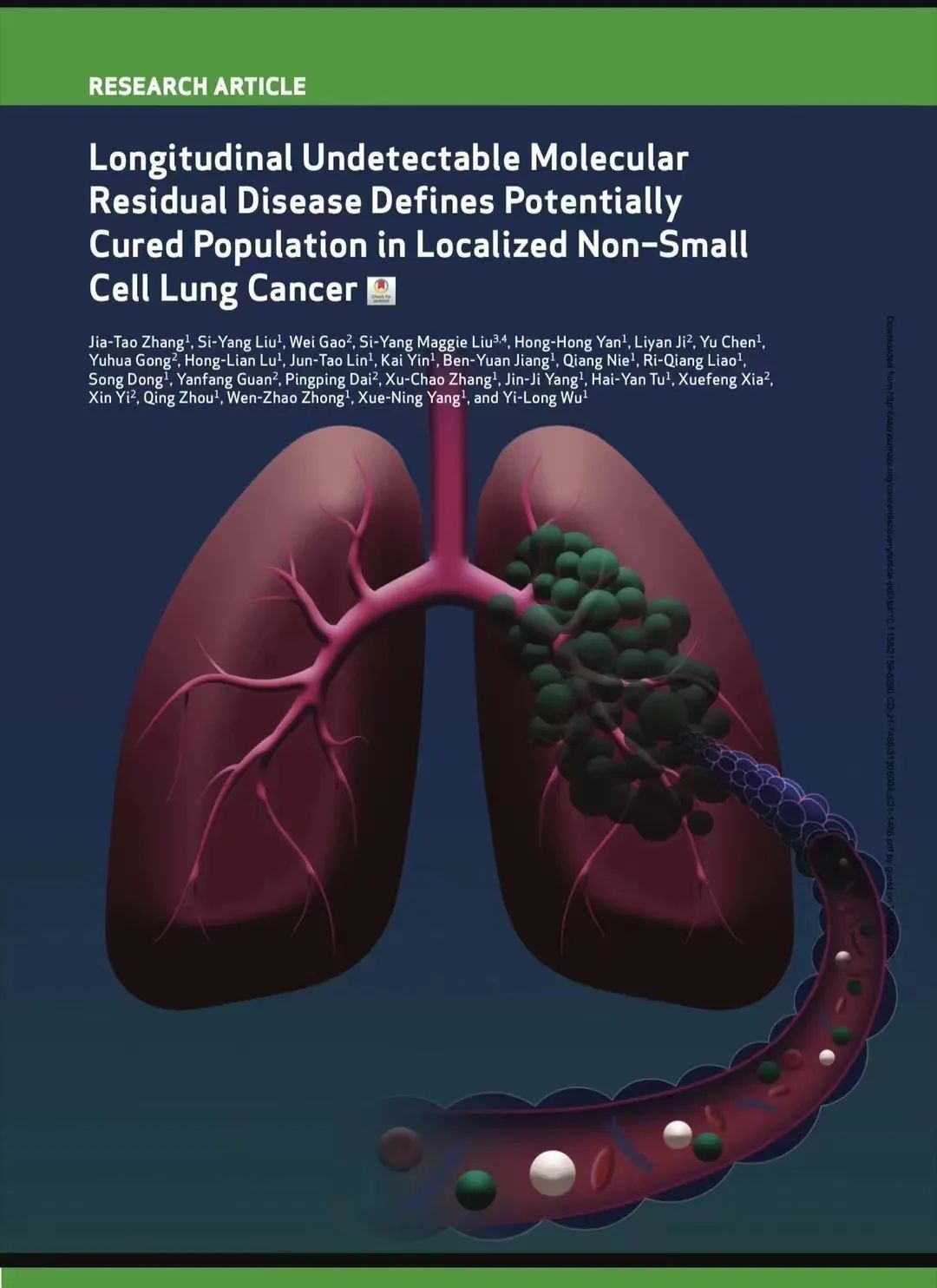
“cancer discovery” cover article
This study determined the prognostic value of molecular residual disease (MRD) detection in patients with non-small cell lung cancer after surgery, especially those patients with undetectable MRD longitudinally, who are a curable lung cancer population in the future.
This research is supported by the whole staff of Guangdong Lung Cancer Research Institute, and the joint production NGS detection platform, A set of accurate, effective and reproducible blood molecular MRD detection methods was established, and 261 patients with stage 1-3 lung cancer after surgery were prospectively observed.
Main result
1. 72.8% (190/261) were MRD-negative lung cancerpatients, observed for the past two years, regardless of stage, 96.8% of these patients did not relapse! Even highly recurrent stage III lung cancer.
2. The peak period of postoperative MRD yin-yang conversion is from 12 months to 18 months after operation , therefore, two-year dynamic MRD testing is particularly important to determine which lung cancer patients are curable!
3. For patients with negative MRD, adjuvant therapy is meaningless. Even for patients with stage II-III lung cancer, which are considered to require standard adjuvant therapy, it is also meaningless. This is consistent with the results of most published studies so far.
4. Brain metastases were a factor affecting the predicted outcome. 5 patients with brain metastases were all MRD-positive at baseline; MRD-negative patients had almost no brain metastases.
What problems can the above results solve for clinical practice?
Professor Wu Yilong believes that postoperative lung cancer patients with persistently negative MRD may be cured patients and do not need adjuvant therapy!
He uses the word “maybe”, and the reason why he is not sure is because the time of follow-up in this group of patients Still too short. If the same results are expected in the follow-up in the next 5 years, the word “may” can be removed. Again, more prospective studies are needed to confirm such results.
Beginning with the initiation of this prospective study in March 2019, as of January 2021 with the last patient enrolled, 261 patients collected 261 pre- and post-operative blood pairs and 256 tumor tissue samples, plus 652 postoperative blood samples, analyzed 1,430 data in two and a half years. The success of this study is inseparable from the continuous persistence of the research team. unremitting.
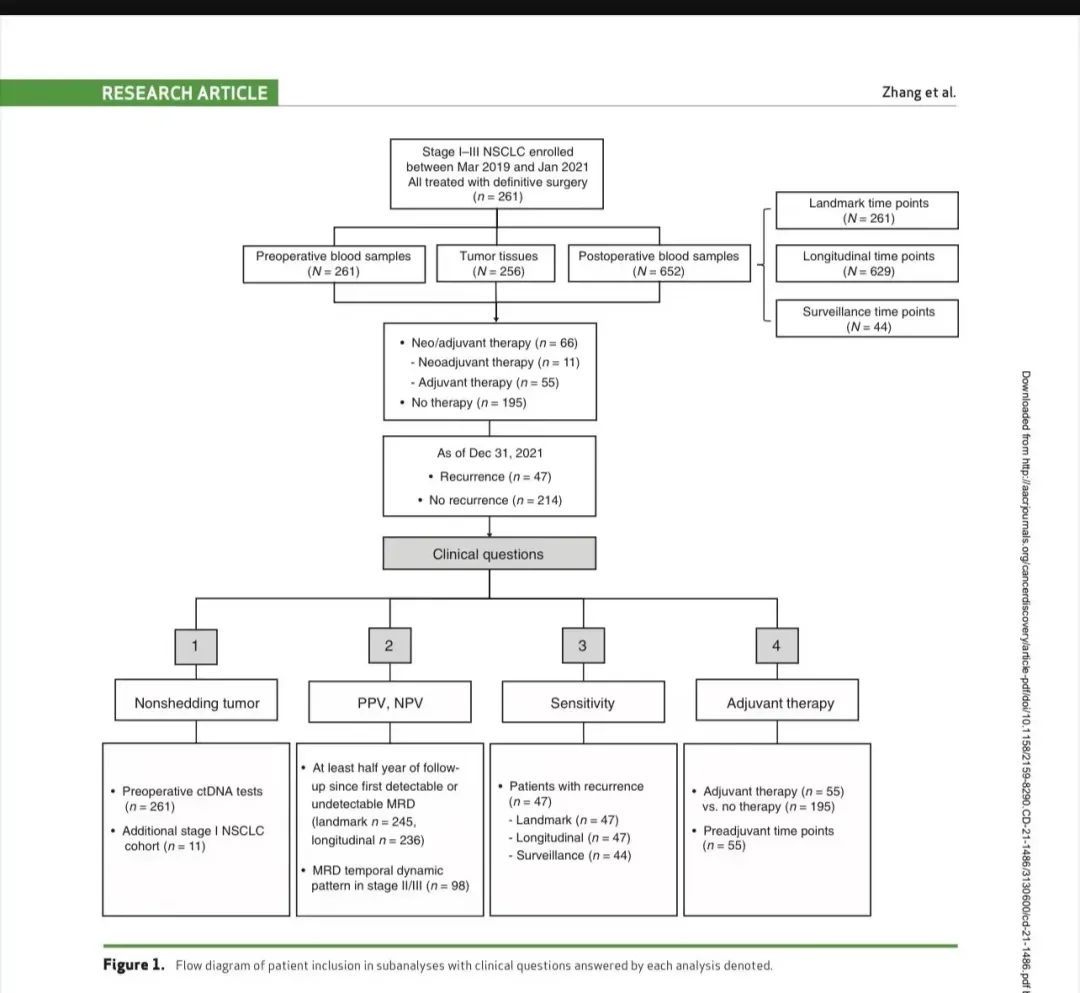
The study enrolled 261 patients who received radical 913 peripheral blood samples were successfully tested by the MRD test in patients with stage I to III NSCLC undergoing sexual surgery. In the population, 6 patients with longitudinally undetectable MRD (3.2%) had recurrence with a negative predictive value of 96.8%. Longitudinal undetectable MRD can define cured patients. The highest risk of developing detectable MRD is approximately 18 months after landmark detection. Accordingly, the positive predictive value of longitudinally detectable MRD was 89.1%, and the median lead time was 3.4 months. Brain-only recurrences were rarely detected by MRD (n = 1/5, 20%).
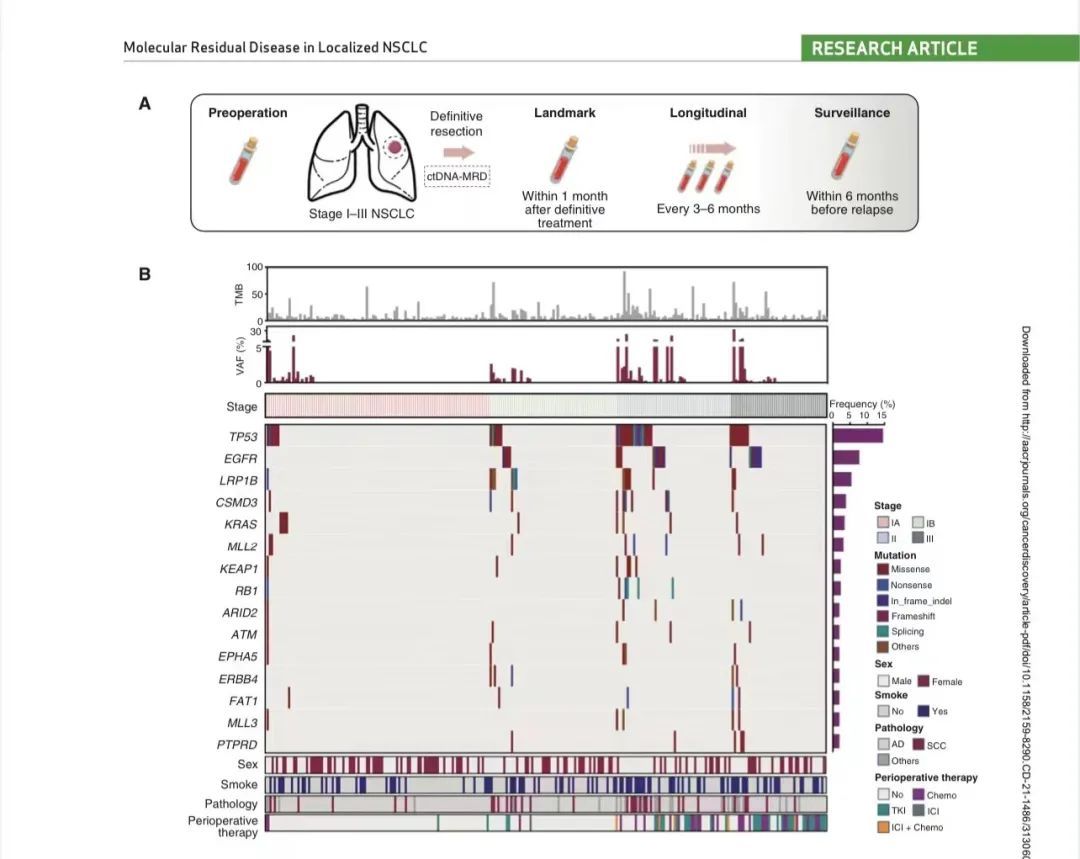
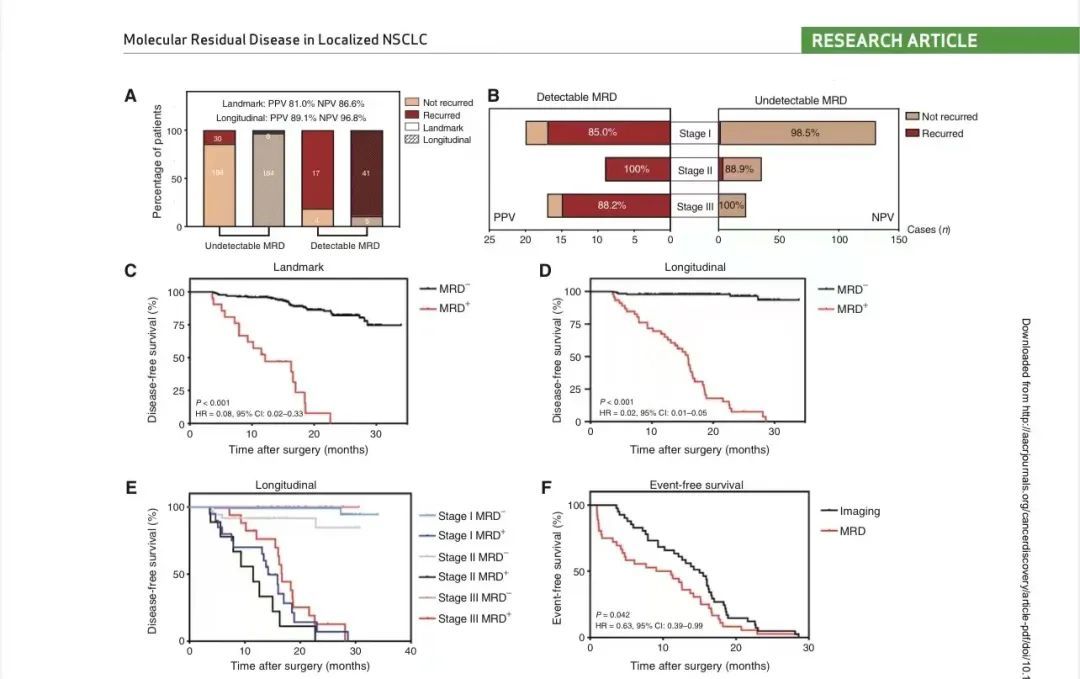
The research group also studied the prediction of MDR on the effect of adjuvant therapy. A total of 55 patients received adjuvant therapy, including 23 patients with chemotherapy and 26 patients with targeted therapy. And ICIs with and without chemotherapy 6 Example. 10 were MRD-positive, and the results showed that adjuvant therapy brought a survival advantage to MRD-positive patients. The researchers say this is only a preliminary observation due to the limited sample size. MRD status reflects tumor burden, and MDR cannot be detected of patients with extremely low tumor burden, adjuvant therapy may not be necessary for these patients.
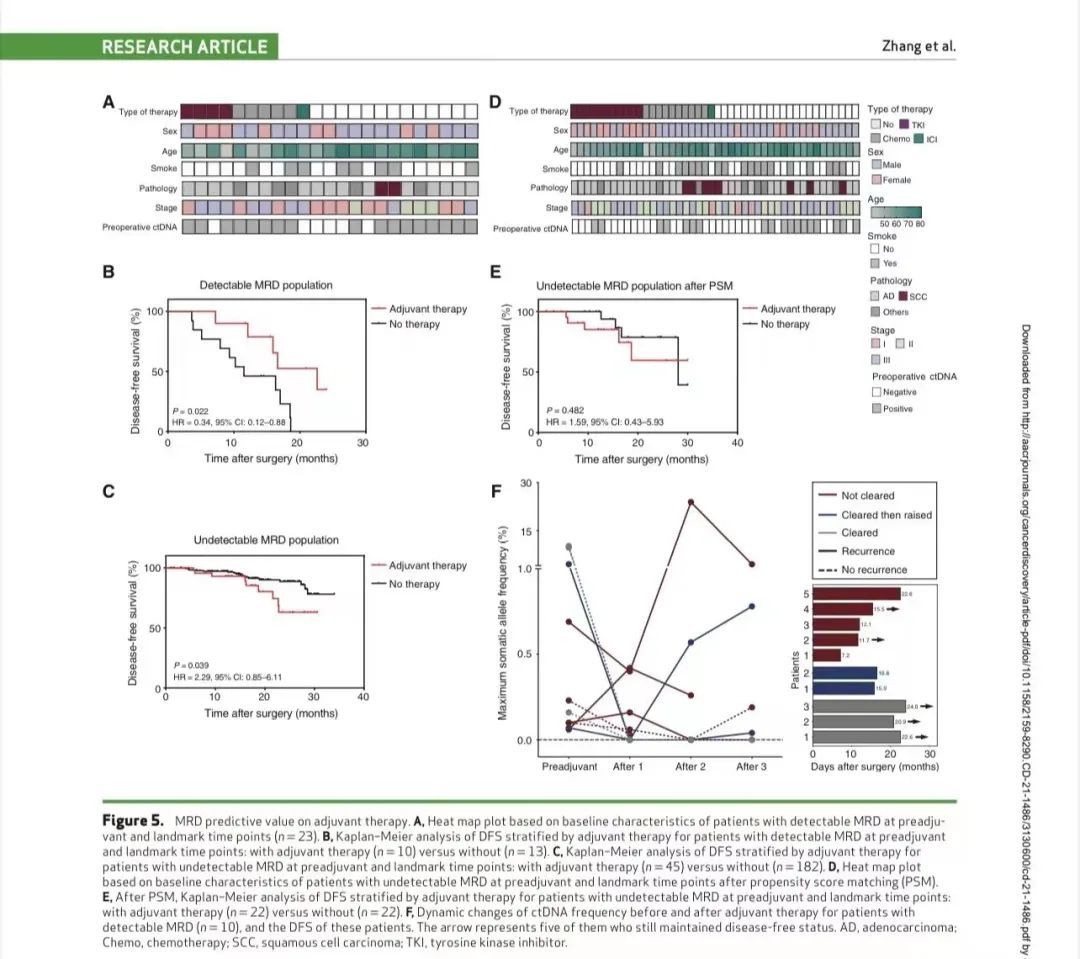
< p>At present, the team is still carrying out the follow-up work of these 261 patients, looking forward to the 5-year follow-up to obtain the same results, and looking forward to more similar prospective studies in the future to confirm that MDR-negative patients are Curable lung cancer patients.